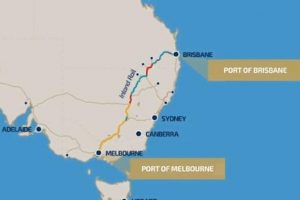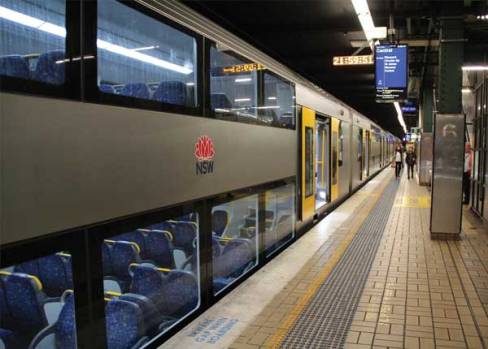The Australian National Audit Office has examined the Australian Rail Track Corporation’s pre-construction preparations for the Inland Rail and found that the ARTC must be better prepared when spending the government’s $8.4bn.
The Inland Rail program is to construct a rail line from Melbourne to Brisbane, covering a total distance of approximately 1,700 kilometres. In 2014, the Australian Government provided $300 million for pre-construction work on the proposed rail line, and in 2017 committed $8.4 billion to build it. The Australian Rail Track Corporation (ARTC, a wholly government owned business enterprise) is undertaking the pre-construction work, and has been selected by government to deliver the full program of works over the next seven years, 2017–18 to 2024–25.

In managing the pre-construction phase of the Inland Rail program, the ANAO found that the ARTC could have had a greater focus on achieving value for money in procurement activities. The ARTC identified the need to improve existing business functions and procurement practices throughout the pre-construction phase, and commenced initiatives to strengthen administration. These initiatives need to be fully implemented to support the ARTC in effectively managing the full Inland Rail program in coming years and delivering value for money.
Testing of a sample of 54 procurements for the Inland Rail program found a lack of consideration given to competition in the early phase of the program, where a considerable proportion of procurements (17 per cent of the sample) were sole sourced. Procurement activities improved during the sampling period, as new systems, processes and practices were implemented.
The ARTC’s established Information and Communications Technology (ICT) systems and procurement and document management processes and practices were well short of the needs of the Inland Rail program. The ARTC is further reviewing its procurement policies and procedures and supporting business functions for the full construction of Inland Rail.
Governance arrangements oversighting the pre-construction phase of the Inland Rail program were appropriate, in so far as they adapted to the different stages of the implementation of the program, and considered the Australian Government’s interests with regard to longer term decisions about the delivery of the complete Inland Rail. There was no evidence, however, that due consideration had been given to matters raised about the skills and status of committee members, specifically in relation to departmental representation. There could also have been more emphasis on achieving value for money in procurement and contracting activities.
Grant funding was appropriately managed for each of the four funding packages provided for the pre-construction phase of the Inland Rail program. However, high-level deliverables, outcomes and reporting arrangements were not developed through the Minister’s required funding agreement for the pre-construction phase, which could have supported greater emphasis on obtaining value for money in procurement activities associated with the milestone deliverables identified in the grant funding submissions.
Procurement
The ARTC did not have appropriate ICT systems to support procurement for the pre-construction phase of the Inland Rail program. There was a heavy reliance on manual processes, paper-based approvals and non-standardised records management procedures. As at July 2017, specifically for the Inland Rail program, the ARTC has upgraded the Contracts module and implemented a Tenders management module in the corporate Financials & Supply Chain system, and is at an early stage in deploying a system for records management. These improvements, if fully bedded down, with intended functionality being utilised and supported by updated procedural documentation, would strengthen the Inland Rail program’s procurement processes and records management, and could have application more broadly across the ARTC.
The ARTC did not have appropriate policies and procedures to support procurement for the pre-construction phase of the Inland Rail program. Established procurement policies and procedures were not sufficiently robust for the administration of the Inland Rail program.
Testing of a sample of procurements undertaken between 29 April 2014 and October 2016 for the pre-construction phase of the Inland Rail program found shortcomings in providing value for money. There could have been greater consideration of competition in the selection processes, although the use of non–competitive procurement methods was concentrated in those procurements undertaken prior to July 2015. In the sampled procurements conducted after that date, there were improvements in the levels of competitive procurements and documentation. Evidence of the importance of probity in procurement is shown through ARTC’s contracting procedure, but testing identified insufficient documentation of the reasons for or against using a probity advisor. The testing also showed many variations to contract values that were not sufficiently explained, and work commencing prior to contract execution. These issues had been identified in ARTC internal audits. A review of the documentation for four later procurements showed improvement in the procurement process, consistent with the upgrade in the systems and newly developed policies and procedures supporting procurement for the Inland Rail program.
The ARTC’s response
As a general observation, ARTC considers the findings do not adequately reflect the uncertainty and lack of clarity associated with the initial funding, longevity and responsibilities for the program during the period when decisions were being made as to the future of the Inland Rail project.
Indeed, it was only in May 2016 that ARTC was confirmed as the delivery agency and in the May 2017 Budget that the funding commitment was confirmed. This imposed constraints on ARTC’s approach to procurement, contract management and the project’s risk management approach.
Notwithstanding this high level of uncertainty, 45 out of 54 tested procurements were competitively sourced through tenders, standing offers and quotes. Within this context, ARTC was also focused on achieving value for money. Even though, as observed, ARTC is not obliged to follow the Commonwealth Government Procurement Guidelines, subsequently, ARTC has sharpened its approach to Inland Rail’s procurement and contract management. In addition, monthly management reporting is being enhanced.
Comment below to have your say on this story.
If you have a news story or tip-off, get in touch at editorial@governmentnews.com.au.
Sign up to the Government News newsletter

